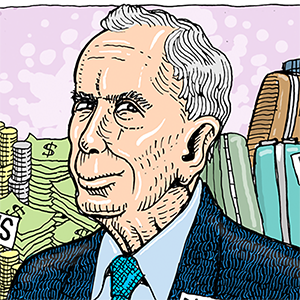Denver’s experiment in providing a soft landing for newly arrived migrants and asylum-seekers isn’t cheap – but doing nothing might cost more
Published in Political News
The burden of supporting asylum-seekers with food and housing often falls to cities, creating severe budget crunches. But Denver is piloting a new approach designed to integrate immigrants into the workforce faster.
The Denver Asylum Seekers Program offers six months of rent-free housing along with legal assistance, food aid and workforce training. The program started on April 10, 2024, with spots for up to 1,000 participants.
Only asylum-seekers who were already living in Denver when the program launched are eligible – a provision designed to control costs and discourage hopeful participants from coming to Denver. This is an important detail in a city that, like others, has groaned under the financial strain of an influx of migrants since December 2022.
Upfront financial costs of the new program include expenditures on housing, food and training, which is predicted to cost around US$1,700 per migrant.
So is this expenditure worth it? One way to assess that is to look at an economist’s tool set called a cost-benefit analysis. I teach this tool set as a professor of economics at Colorado State University. Such an analysis considers broad benefits and costs of a program like Denver’s compared with maintaining the status quo or “doing nothing.”
Migrant flows in Denver reached a peak in early 2024 when 5,213 people arrived in just one day, leading the to cut hours at recreation centers and the Division of Motor Vehicles to help free up funds to provide food and housing.
Many of the migrants arrived from the Mexico border, put on buses paid for by the Texas governor because of Denver’s status as a sanctuary city. Denver has seen 42,817 migrants arrive since the end of 2022, more than any other U.S. city its size, but the numbers have fallen significantly in recent weeks.
The new Denver Asylum Seekers Program was designed to control costs by serving a limited number of asylum-seekers while assisting others with “securing onward travel,” as the city describes it, after staying just 72 hours in temporary housing. Previously, the city had offered 14 days of shelter for adults and 42 days for families.
The program allowed Denver to trim $15 million per quarter from its previously projected budget, but the city will still spend $90 million in migrant services in 2024, including the costs of the Denver Asylum Seekers Program.
Denver currently has more than 10,000 people experiencing homelessness, so one motivation for the new program is to keep these migrants off the streets.
Denver’s homeless population grew 32% in 2023 to about 10,000 people even when migrants are not included in the totals. More people on the streets leads to higher care costs in emergency rooms and for policing.
If the program means that some of costs associated with “doing nothing” are avoided, then those avoided costs could go to other income support and preventive programs. This idea was illustrated in 2023 when Denver faced extra expenditures on migrant services and around $2 million were paid from Department of Human Services accounts, shortchanging other programs.
The Denver program is a direct response to work authorization processing times for newly arrived asylum-seekers which, in recent months, have taken as long as a year. Under federal law, asylum-seekers must wait 150 days before even applying to legally work in this country.
The Denver program is designed to put that waiting period to good use via workforce training, which increases the odds that migrants will quickly secure employment as soon as they’re allowed to work.
Workforce training will benefit not only the migrants themselves, but also their dependent family members and local economies. Recently published statistics show that 43% of refugees to Colorado were under 18, so getting migrant parents to work will minimize costs to programs that support children like public welfare services.
Research suggests that supporting migrants will also promote local economic development.
An economics professor at Montana State University found that a 100-dollar increase in monthly assistance received by refugees through the federal Temporary Assistance for Needy Families program was associated with 5% to 8% higher wages for these migrants once they started working. The research concluded that refugee assistance was cost-effective to bridge refugees into well-matched jobs. Those jobs in turn contribute to the long-run economy that benefits everyone.
Refugee integration also has been shown valuable for Colorado specifically. Professors with the Colorado School of Public Health and the University of Colorado Anschutz documented links between economic sufficiency and community integration of 467 Colorado refugees over three years. They measured integration based on understanding American culture, knowing legal rights, and other aspects of social and economic stability.
A common counterargument to investments in new migrants is the possibility of labor-market displacement of native-born workers. However, in a paper circulated by the U.S. Department of State, refugee admissions were shown to have not affected wages or employment for natives over a 30-year study period.
A 2018 Colorado Department of Human Services report found that 2,700 refugees generated $611 million in new economic activity in the state. The rate of return was $1.23 in new state and local tax revenue for each $1 invested in refugee services.
If this first-of-its-kind program achieves this same return on investment, it can be expanded or replicated in other cities to decrease migrant expenditure and promote local economic sustainability.
This article is republished from The Conversation, a nonprofit, independent news organization bringing you facts and trustworthy analysis to help you make sense of our complex world. It was written by: Anita Alves Pena, Colorado State University
Read more:
Advertising a house is ridiculously expensive in Australia – could that be affecting the property market?
Immigrant moms feel unsafe and unheard when seeking pregnancy care – here’s how they’d improve Philly’s health care system
The president’s executive order: what difference will it make for immigrants?
Anita Alves Pena does not work for, consult, own shares in or receive funding from any company or organization that would benefit from this article, and has disclosed no relevant affiliations beyond their academic appointment.





























































Comments